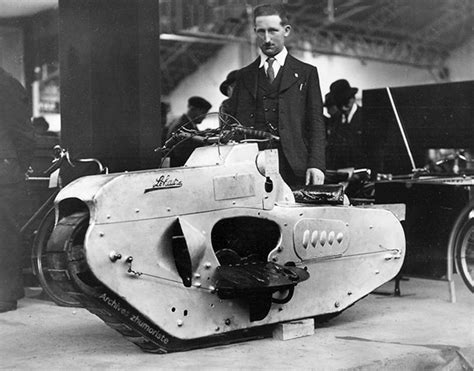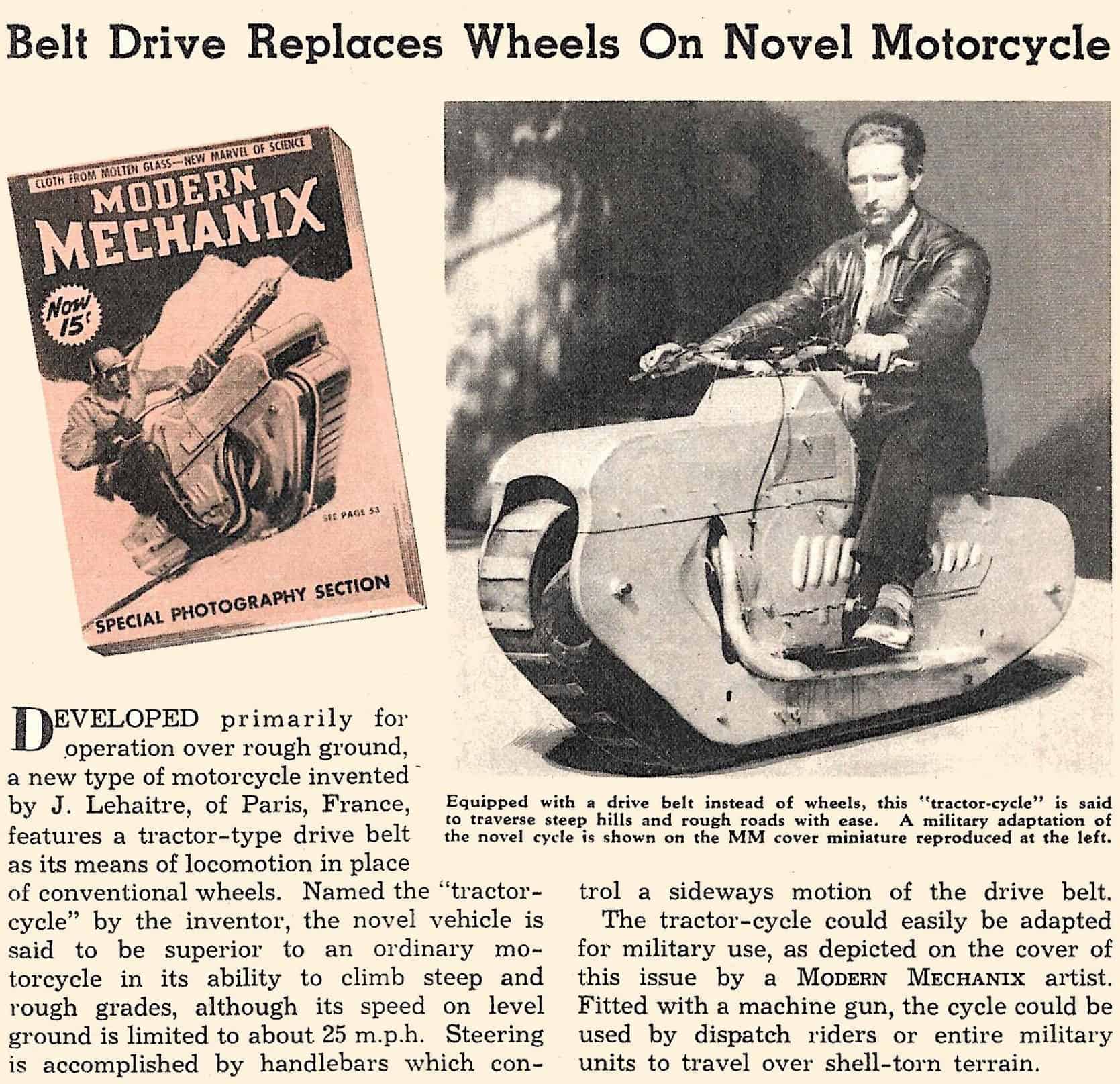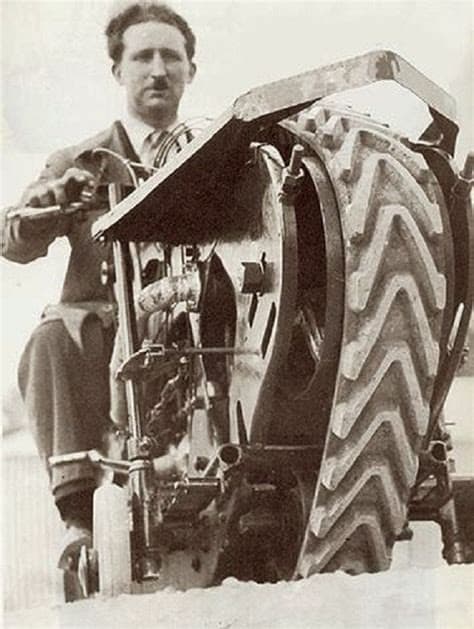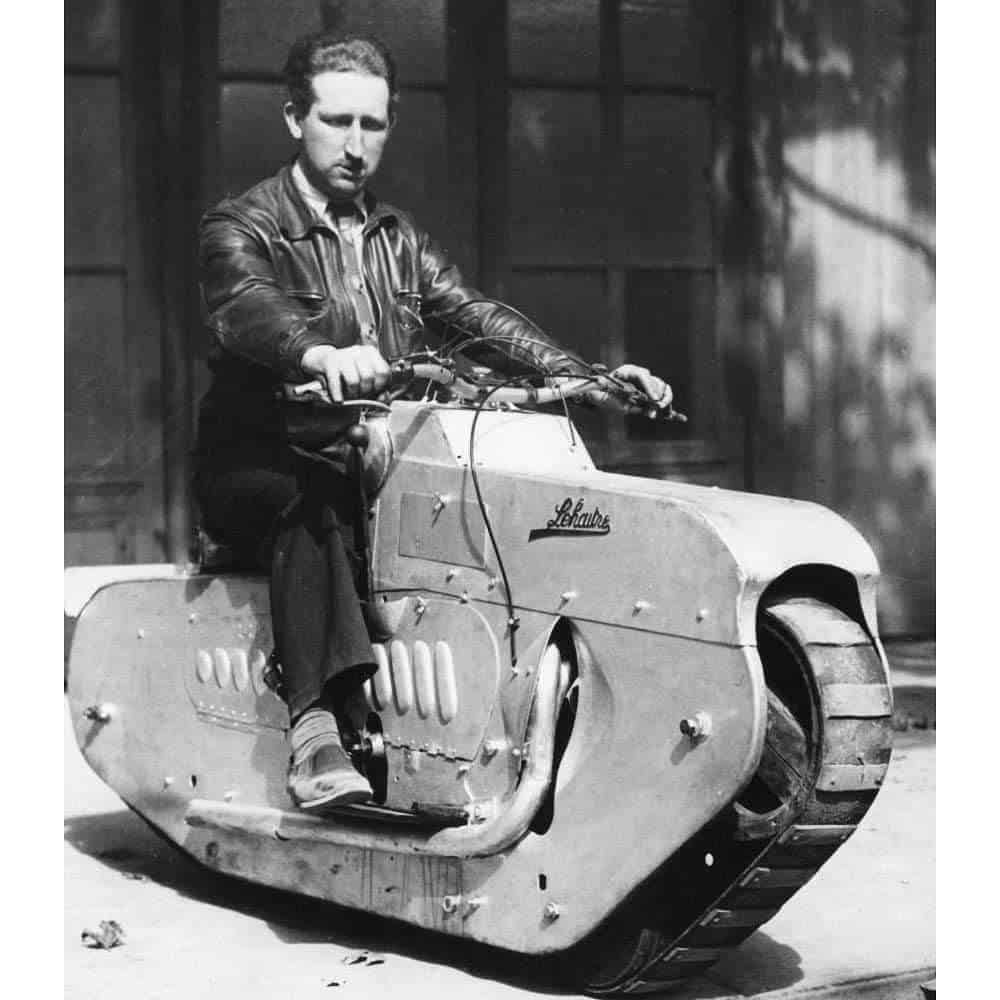In the annals of transportation history, there have been numerous fascinating inventions that aimed to reshape how we move across different terrains. One such innovative yet obscure creation was the Tractor-Cycle, an extraordinary tracked motorcycle designed by Joseph Lehaitre in 1938. This unique vehicle blended elements of a motorcycle with a caterpillar track system, creating a machine that could traverse challenging landscapes with greater ease than traditional two-wheeled motorcycles.

The Birth of the Tractor-Cycle
During the early 20th century, inventors across the world sought to improve motorcycle efficiency and adaptability, particularly for off-road and military applications. Among them, French engineer Joseph Lehaitre envisioned a solution to the limitations of conventional motorcycles by incorporating a continuous track system instead of wheels. This novel approach allowed for enhanced stability and grip, making it particularly useful for rough and uneven terrains.

Design and Functionality
The Tractor-Cycle’s standout feature was its tank-like caterpillar tracks, which replaced standard motorcycle wheels. These tracks offered superior traction on difficult surfaces such as mud, snow, and steep inclines. Unlike traditional motorcycles that relied on a narrow contact area with the ground, the Tractor-Cycle distributed weight more evenly, reducing the chances of sinking in soft terrain.

Key Features:
- Tracked Propulsion: The continuous belt-like track system provided enhanced grip and stability.
- Steering Mechanism: Handlebars controlled the vehicle’s direction by altering the track’s angle and pressure distribution.
- Speed and Performance: While not built for high-speed travel, the Tractor-Cycle could reach up to 25 miles per hour (40 km/h), which was sufficient for military and off-road purposes.
Intended Applications
Lehaitre’s invention was primarily conceived for military reconnaissance, agriculture, and rugged terrain navigation. The idea was that such a vehicle could traverse challenging landscapes where traditional motorcycles or automobiles would struggle. Early conceptual illustrations and discussions even suggested a potential weaponized version of the Tractor-Cycle, possibly equipped with a machine gun for combat scenarios.
While the design was undoubtedly groundbreaking, the complexity and bulkiness of the Tractor-Cycle ultimately prevented it from gaining widespread adoption. Unlike conventional motorcycles, its tracked system required significant maintenance, and the added weight made it less practical for everyday use.
The Legacy of the Tractor-Cycle
Despite its limited production and lack of commercial success, the Tractor-Cycle remains an important piece of engineering history. It serves as a testament to human ingenuity and the constant drive to push the boundaries of vehicle design. Today, it stands as a precursor to modern tracked motorcycles used in military and extreme off-road conditions.

The legacy of Joseph Lehaitre’s invention continues to inspire enthusiasts of vintage engineering and unique vehicle concepts. While the Tractor-Cycle itself may not have changed the world, its innovative spirit lives on in today’s specialized tracked vehicles.
Conclusion
The Tractor-Cycle of 1938 is a perfect example of bold engineering ahead of its time. Though it never became mainstream, its vision of adapting motorcycles for extreme conditions has influenced modern vehicle design. Whether you’re a history buff, a motorcycle enthusiast, or someone fascinated by unique inventions, the story of Joseph Lehaitre’s Tractor-Cycle is one worth remembering.

Do you think the Tractor-Cycle could have had a place in today’s world with modern modifications? Let us know your thoughts in the comments below!





